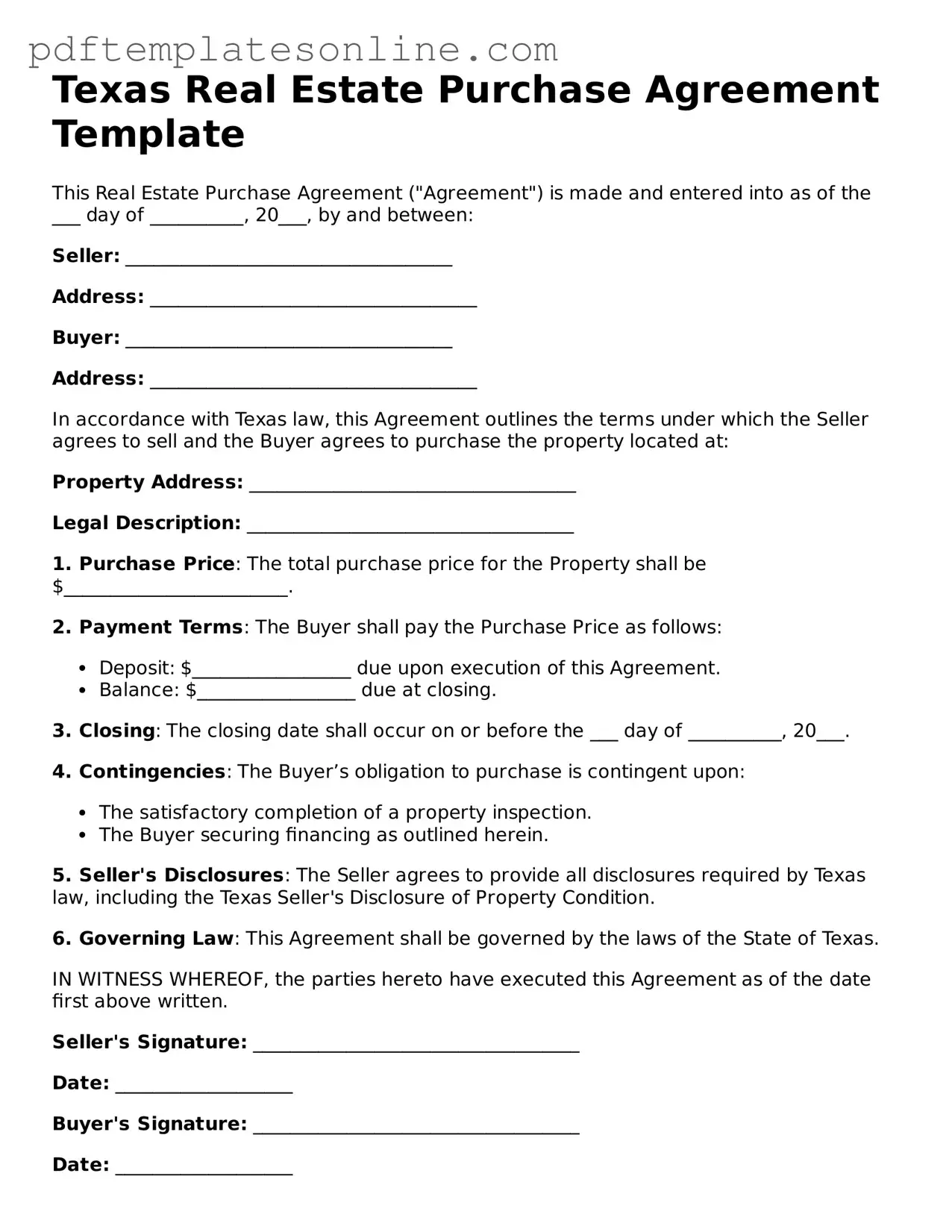Filling out the Texas Real Estate Purchase Agreement form can be daunting. One common mistake is failing to include all necessary parties. Ensure that all buyers and sellers are listed correctly. If a spouse or co-owner is not included, it can lead to complications down the line. Always double-check that every person involved in the transaction is accounted for.
Another frequent error is neglecting to specify the property details accurately. This includes the address, legal description, and any relevant features of the property. Missing or incorrect information can cause confusion and may even delay the closing process. Take the time to verify these details before submitting the agreement.
Many people also overlook the importance of the earnest money deposit. This deposit shows the seller that the buyer is serious about the purchase. Failing to specify the amount or the terms surrounding the deposit can create misunderstandings. Make sure to clearly outline how much earnest money is being offered and the conditions for its return.
Additionally, buyers and sellers sometimes forget to address contingencies. These are conditions that must be met for the sale to proceed. Common contingencies include financing, inspections, and appraisals. Not including these can lead to unexpected issues later. Clearly state any contingencies to protect your interests.
Lastly, neglecting to review the entire agreement before signing is a significant mistake. It’s essential to read through the document carefully. This includes understanding all terms and conditions. If something is unclear, seek clarification before proceeding. Taking the time to review can prevent costly errors and ensure a smoother transaction.
